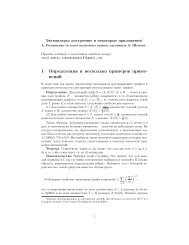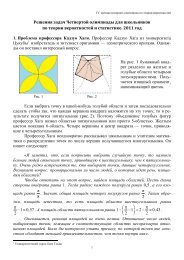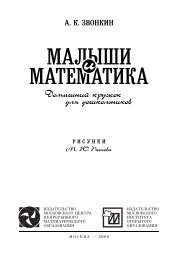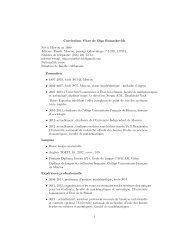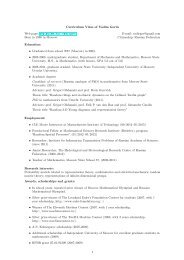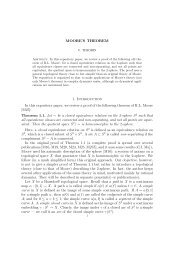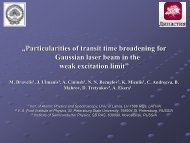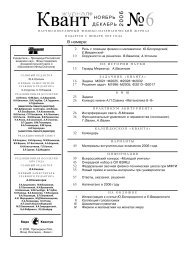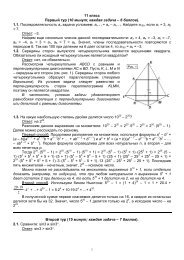a gauss-bonnet theorem, chern classes and an adjunction formula
a gauss-bonnet theorem, chern classes and an adjunction formula
a gauss-bonnet theorem, chern classes and an adjunction formula
You also want an ePaper? Increase the reach of your titles
YUMPU automatically turns print PDFs into web optimized ePapers that Google loves.
17<br />
coincides with O a ∩ T , we obtain that χ(O a ) = |W |/|Stab a|, where Stab a ⊂ W is<br />
the stabilizer of a in W . If a is not semisimple, then χ(O a ) = 0.<br />
Let F be a constructible complex on G.<br />
Proposition 2.9. Suppose that F is equivari<strong>an</strong>t under the adjoint action of G. Let<br />
F T be a restriction of F onto T ⊂ G. Then the sheaves F <strong><strong>an</strong>d</strong> F T have the same<br />
Euler characteristic:<br />
χ(G, F) = χ(T, F T ).<br />
Proof. The sheaves F <strong><strong>an</strong>d</strong> F T<br />
have the same local Euler characteristic at a point<br />
x ∈ T , since F T is the restriction of F onto T . Thus the Euler characteristic χ(T, F T )<br />
is equal to ∫ χ(F)dχ by Proposition 2.6. The function χ(F) is invari<strong>an</strong>t under the<br />
T<br />
adjoint action of G, <strong><strong>an</strong>d</strong> Proposition 2.8 implies<br />
∫<br />
∫<br />
χ(F)dχ = χ(F)dχ.<br />
T<br />
G<br />
The last integral is equal to the Euler characteristic χ(G, F) by Proposition 2.6.<br />
2.4 Gaussi<strong>an</strong> degree of invari<strong>an</strong>t subvarieties<br />
We now compare the Gaussi<strong>an</strong> degrees of X in G <strong><strong>an</strong>d</strong> of X ∩ T in T . Clearly, the<br />
Gaussi<strong>an</strong> degree of a k-dimensional subvariety is equal to the sum of the Gaussi<strong>an</strong><br />
degrees of its k-dimensional irreducible components. Thus we c<strong>an</strong> assume that X<br />
is irreducible. There are two cases: the set of all nonsemisimple elements of X has<br />
codimension either 0 or at least 1. In what follows we prove that in the first case<br />
gdeg(X) = 0, <strong><strong>an</strong>d</strong> in the second case gdeg(X) = gdeg(X ∩ T ). In particular, the<br />
Gaussi<strong>an</strong> degree of <strong>an</strong>y orbit O a<br />
⊂ G coincides with the Gaussi<strong>an</strong> degree of its<br />
intersection with the maximal torus T .




